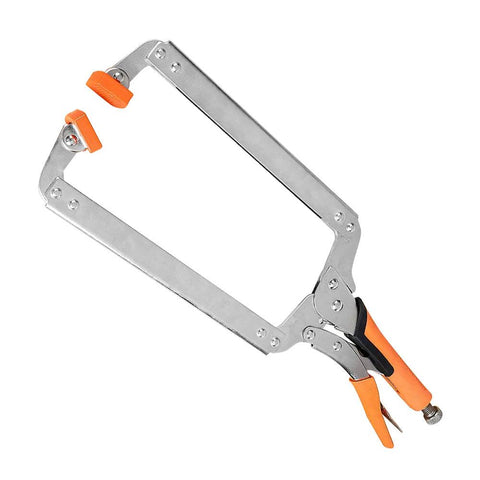What Is The Difference Between A C-clamp And A Bar Clamp?
Woodworking and other DIY projects often require the use of clamps to secure materials and ensure precise and stable work. Two commonly used clamps in workshops are the C-clamp and the bar clamp. While both serve the purpose of holding materials together, they have distinct features and applications. In this article, we will explore the differences between C-clamps and bar clamps, shedding light on their unique characteristics and functionalities.
C-Clamps: Versatile and Sturdy
C-clamps, also known as G-clamps, are named for their distinctive shape, resembling the letter "C." These clamps consist of a stationary jaw in the shape of a flat bar and a movable jaw connected by a threaded spindle. Here are some key features and applications of C-clamps:
- Design and Size: C-clamps are typically made of cast iron or steel, offering durability and strength. They come in various sizes, ranging from small clamps with jaw openings of a few inches to larger clamps that can accommodate wider materials.
- Jaw Opening and Throat Depth: The jaw opening of a C-clamp determines the maximum width of material it can accommodate. The throat depth, on the other hand, refers to the distance from the screw to the edge of the stationary jaw. C-clamps with deeper throats provide greater reach and flexibility when clamping materials.
- Versatility: C-clamps are versatile tools suitable for a wide range of applications. They can be used to secure materials during gluing, drilling, welding, or any situation where temporary holding and clamping is required.
- trength and Stability: C-clamps are known for their robust construction, providing strong and reliable clamping force. Their design allows for secure gripping and minimal movement, ensuring stability during work.
Bar Clamps: Long Reach and Even Pressure
Bar clamps, also known as sliding clamps or F-clamps, are named for their long bar-shaped structure. These clamps consist of a fixed jaw and a sliding jaw that can be adjusted along the length of the bar. Here are some notable features and applications of bar clamps:
- Design and Size: Bar clamps are typically constructed with a steel bar, often with a T-shaped profile to resist twisting and bending. They come in various lengths, with larger clamps capable of accommodating longer materials.
- Sliding Mechanism: The sliding jaw of a bar clamp allows for easy adjustment and positioning along the bar. This sliding feature enables flexibility in clamping different-sized materials.
- Long Reach: Bar clamps excel in situations where long-reach clamping is required. The length of the bar provides ample reach to secure materials at a distance from the edge.
- Even Pressure Distribution: Bar clamps apply pressure evenly along the length of the bar, which is especially beneficial when clamping wide or irregularly shaped materials. This feature helps prevent warping or distorting the workpiece.
- Heavy-Duty Applications: Bar clamps are well-suited for heavy-duty projects that require significant clamping force. Their sturdy construction and long reach make them ideal for tasks such as panel glue-ups, cabinetry, and other demanding woodworking applications.
Choosing the Right Clamp
When deciding between a C-clamp and a bar clamp, consider the specific requirements of your project. Here are a few factors to consider:
- Size and reach needed for the materials you are working with
- Clamping force required for the task at hand
- Stability and rigidity needed during the project
- Flexibility and adjustability required for different workpiece sizes
By understanding the distinctions between C-clamps and bar clamps, you can select the appropriate clamp for your specific woodworking or DIY project. Both clamps have their strengths and applications, so having a variety of clamps in your workshop can provide versatility and ensure optimal results in various situations.
If you want to know more about them, you can visit the FindBuyTool website, which contains various woodworking tools, and search the two tools to check their differences. Before you pay for a satisfying tool, don’t forget to read carefully about the shipping policy. By the way, if you are interested in Findbuytool, click About Us - Findbuytool to learn more about this company.

Jais Info Technology, Copyright @ 2020 | All Rights Reserved